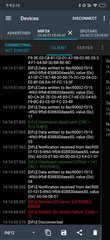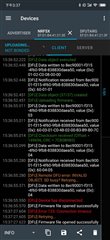Hi,we had finished application development on nrf52832 long ago, based on nrf52 sdk 14.0(with softdevice 5.0). But now we get feedback which is a bug has been fixed on sdk 16.0(with softdevice 7.0). We want to solve this problem by DFU since a lot of productions have appeared on the market. We did the test, but not work(see attatchment). Is this possible technically?





